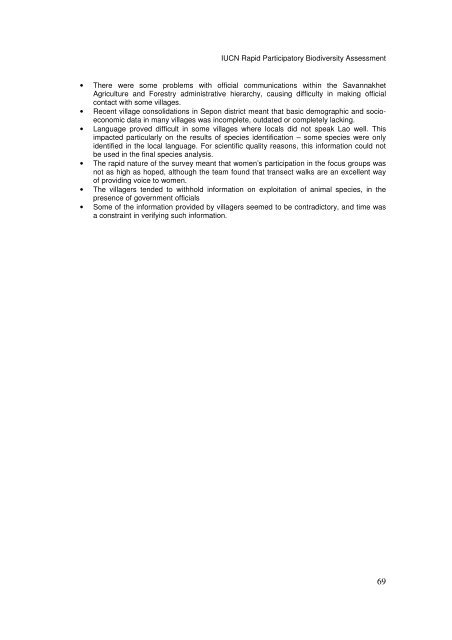Part 1 – A Rapid Participatory Biodiversity Assessment - IUCN
Part 1 – A Rapid Participatory Biodiversity Assessment - IUCN
Part 1 – A Rapid Participatory Biodiversity Assessment - IUCN
You also want an ePaper? Increase the reach of your titles
YUMPU automatically turns print PDFs into web optimized ePapers that Google loves.
<strong>IUCN</strong> <strong>Rapid</strong> <strong>Part</strong>icipatory <strong>Biodiversity</strong> <strong>Assessment</strong><br />
• There were some problems with official communications within the Savannakhet<br />
Agriculture and Forestry administrative hierarchy, causing difficulty in making official<br />
contact with some villages.<br />
• Recent village consolidations in Sepon district meant that basic demographic and socioeconomic<br />
data in many villages was incomplete, outdated or completely lacking.<br />
• Language proved difficult in some villages where locals did not speak Lao well. This<br />
impacted particularly on the results of species identification <strong>–</strong> some species were only<br />
identified in the local language. For scientific quality reasons, this information could not<br />
be used in the final species analysis.<br />
• The rapid nature of the survey meant that women’s participation in the focus groups was<br />
not as high as hoped, although the team found that transect walks are an excellent way<br />
of providing voice to women.<br />
• The villagers tended to withhold information on exploitation of animal species, in the<br />
presence of government officials<br />
• Some of the information provided by villagers seemed to be contradictory, and time was<br />
a constraint in verifying such information.<br />
69

















